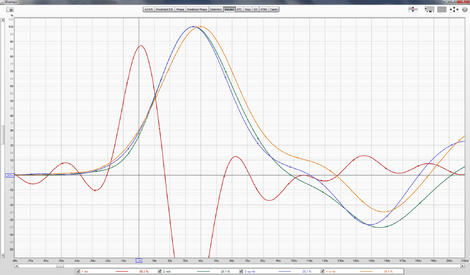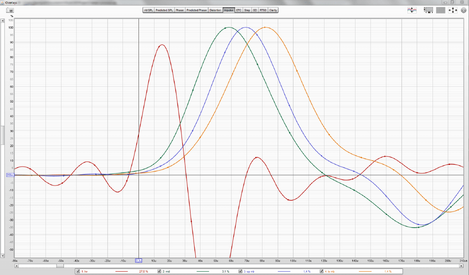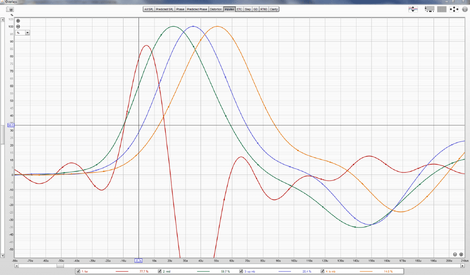do the IR Window settings affect the analysis of the loaded characteristics or also the subsequent measurements?
Duh, yes. The window settings impact which portion of the IR data is used so charts look differently when windowed than when unwindowed. Done properly, it can make the analysis much easier. Done wrong, it uses the wrong data and will not lead to correct analysis. Speaker and Mic placement has a similar impact. There is no need to worry too much about windowing if that is done correctly. Trying to analyze TW-MR XO timing from the LP more difficult than than shown here, but can still be done given some experience. Why make it harder though? See
here for general background.
Change the window settings on the mdat I provided and see how the SPL, phase and delay timing is impacted. A few words here will not explain the situation as well as a little experimentation on your part.
The Ref point is at t = 0, not at the peak. What is the difference?
I thought we covered this several times. The difference is the phase chart and some of other charts are shifted (rotated in the case of the phase). There is no difference in analysis for the purposes of delay timing. Please move t=0 on both measurements the same amount and redo a timing analysis. The relative phase tracking will be unchanged. Again, there is no reason not to try it as see the impact for yourself. Move t=0 to the peak and the relative phase tracking can still be easily read. Move it 1 mm and it can still be read, but the chart gets awfully crowded. Then open the right window up to let more of the room influence into the phase traces and the it is even more difficult to read. Please experiment.
There is a theme here if you haven't seen it yet. Stop repeatedly asking questions like 'what happens if t=0 is in a different place' and other questions that are way too general. Instead experiment yourself and ask us to clarify a specific detail. Provide the background and information like the mdat and charts marked to explain the question clearly. If you don't have the time to do that, then think of us who are trying to read your mind and figure out what portion of 'what happens when t=0 is in a different place' you are still struggling with for the 3rd or 5th time.
It took you 3 minutes to repeat basically the same vague questions and did not even bother to capitalize the sentence or explain what is meant by 'loaded characteristics'. I assumed you meant 'loaded measurements'.
I like to help, but I'm done with overly vague poorly worded questions. I'm still willing to try to answer more detailed questions where you have spent some better effort to clearly explain.
















